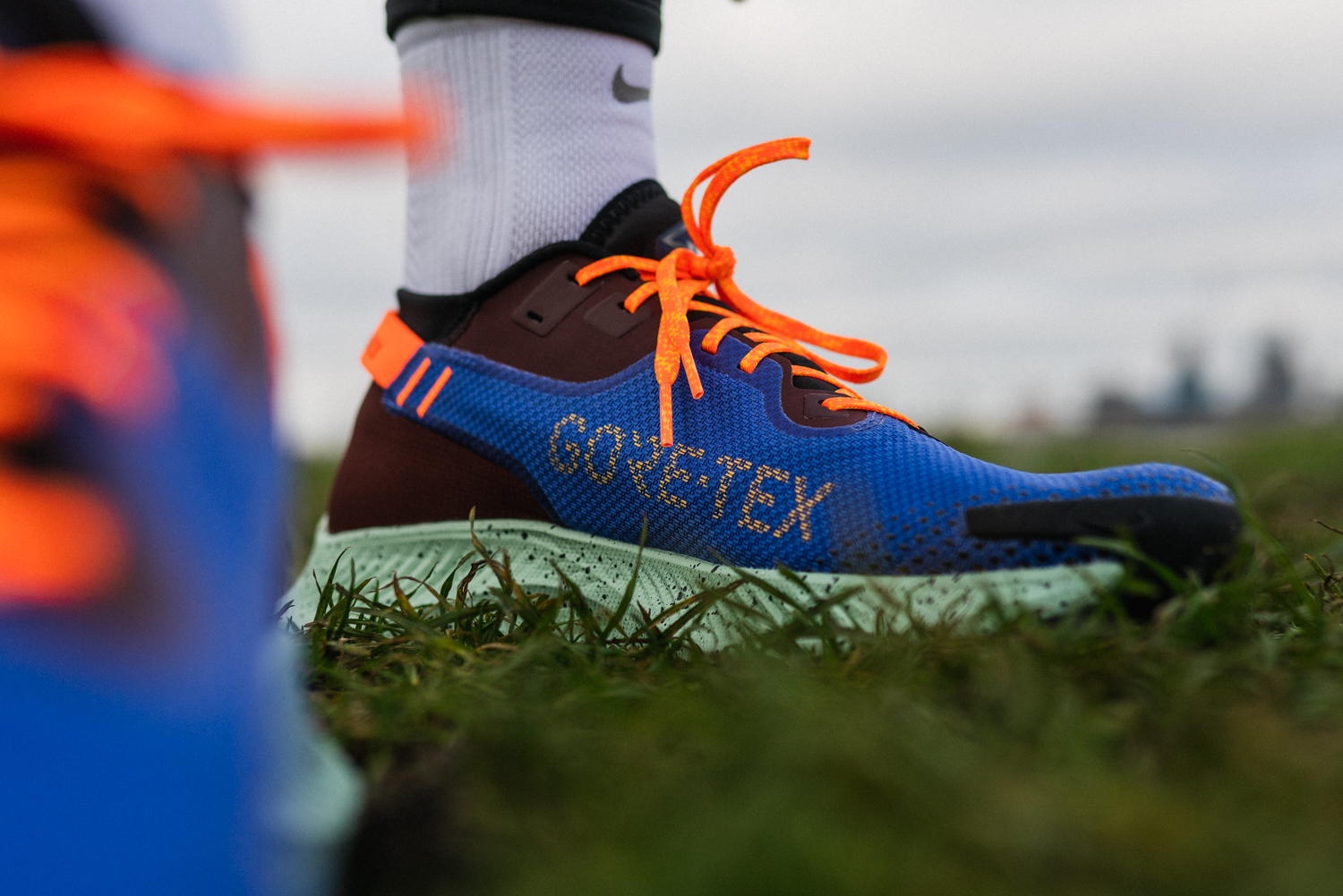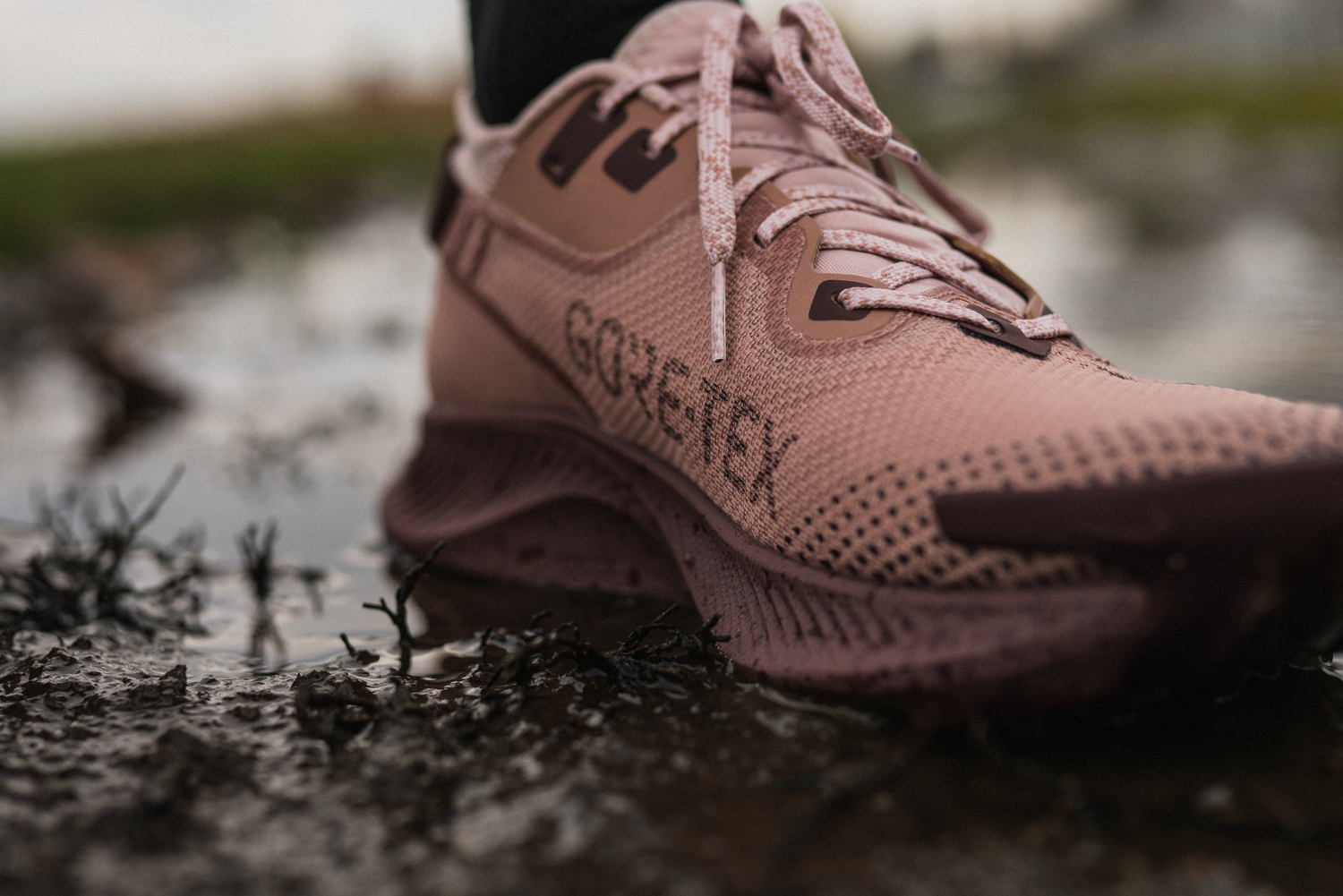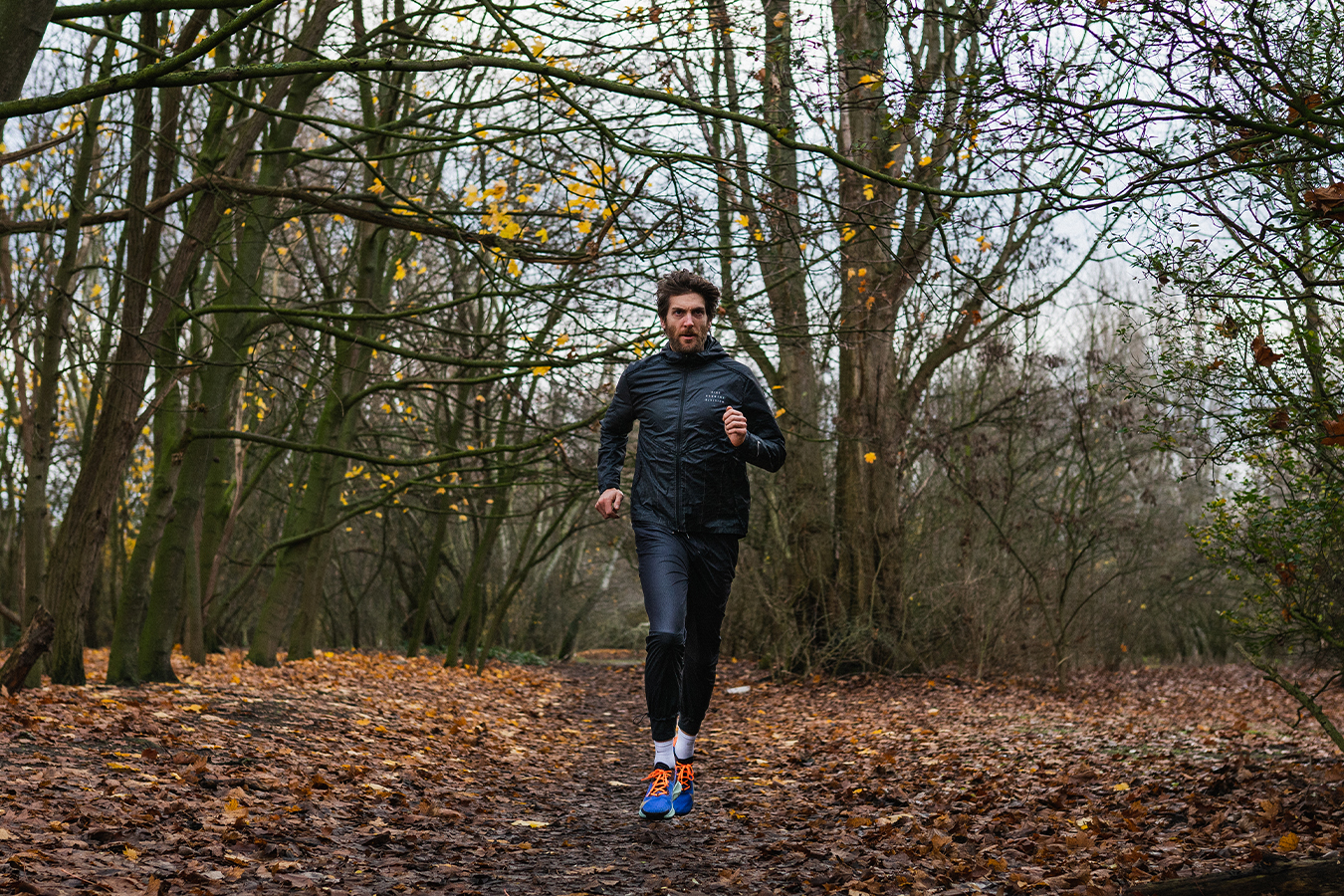You probably know the term “hybrid” from the automotive world. The term has also made its way into the running world, as hybrid running shoes are the bridge between road running shoes and trail shoes.
Hybrid running shoes: multi-purpose
The perfect combo of two ideal worlds.
Waterproof membrane: Do or don’t?
Some hybrid running shoes also feature waterproof features. In fact, their upper is equipped with a waterproof membrane such as GORE-TEX or Sympatex. Those who used to want waterproof shoes had to sacrifice in terms of comfort. Thanks to invisible fit technology, that’s a thing of the past. Eddy D’hondt, purchasing manager at Runners’ lab, is already enthusiastic about this technique.
“The invisible fit technology provides a waterproof shoe that can compete with the comfort of a non-waterproof shoe. Previously, an extra layer of GORE-TEX was applied inside the shoe that kept the water out, but was clearly felt. By using this new technology, you also have a waterproof and well-breathable membrane, but you don’t feel it. In my eyes, this feature provides great added value.”
At first glance, waterproof shoes seem like a great luxury. However, there is also a downside to this feature, because sometimes it cuts into its own skin. The membrane may be waterproof, but water can still enter the shoe past your ankles. However, what is inside does not run out due to its waterproof properties. So when you have to face large puddles or cross a river, it is quasi inevitable that water will run into your shoes. In such situations, waterproof shoes are not recommended. In rainy weather or wet surfaces, this feature does come in handy.


When is it best to choose a hybrid shoe, and when not?



